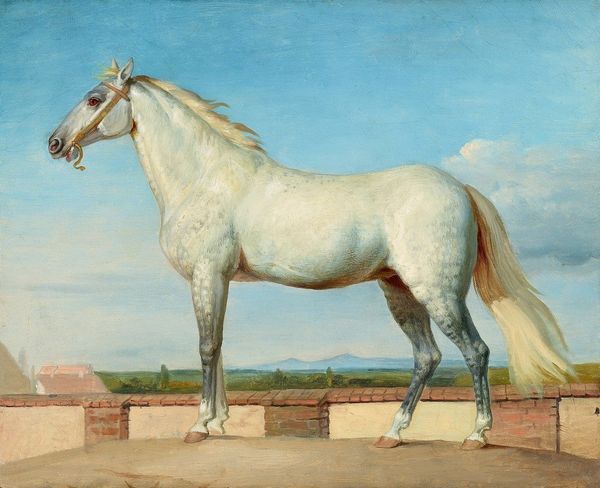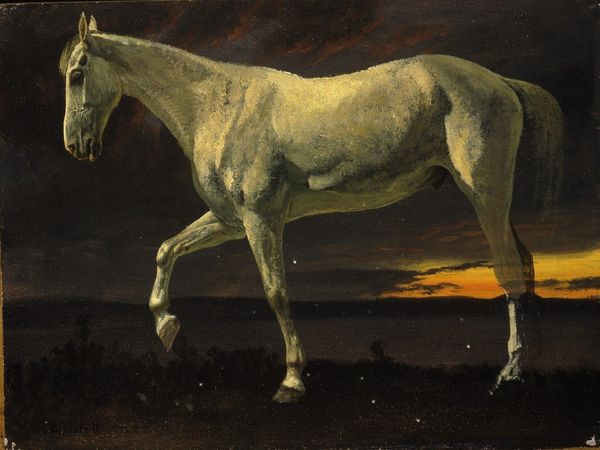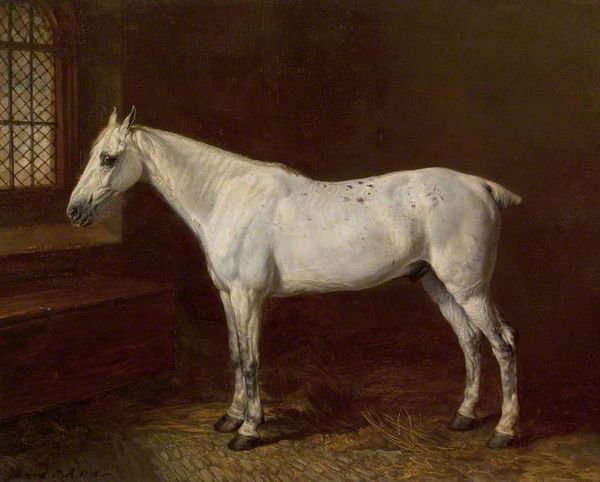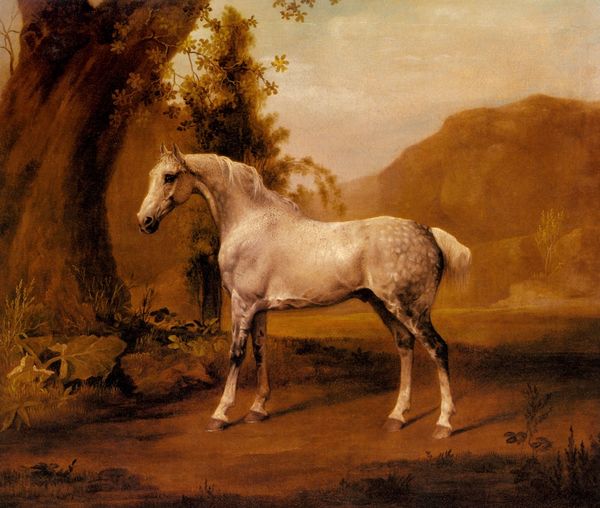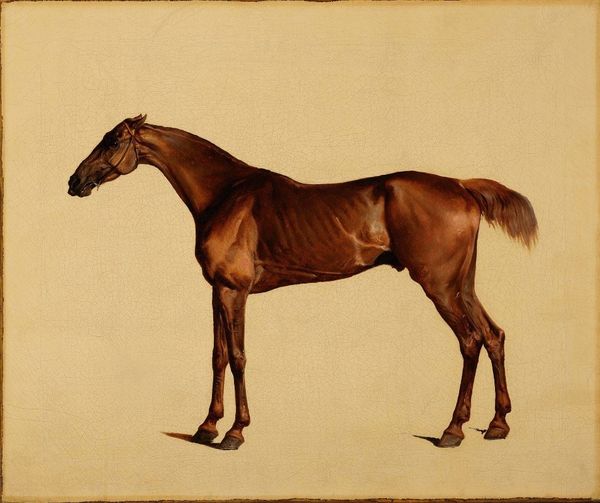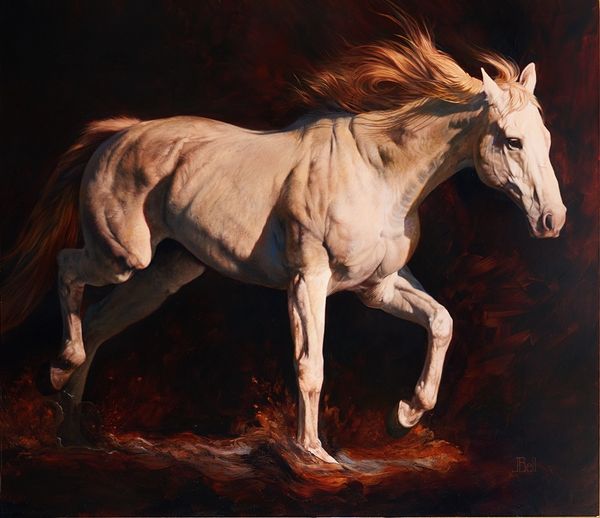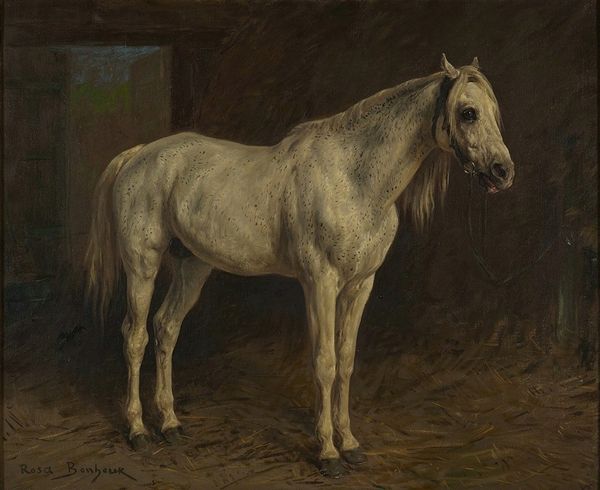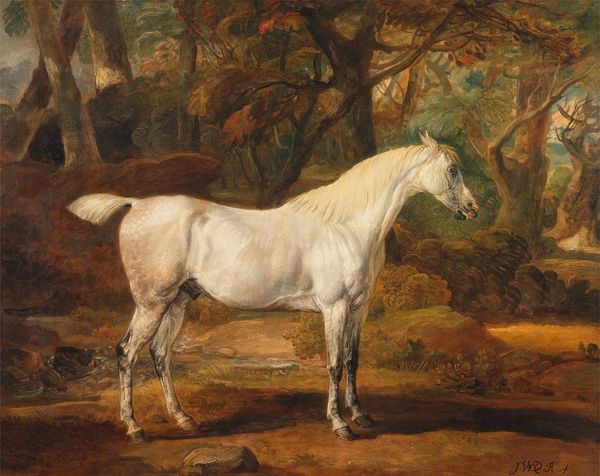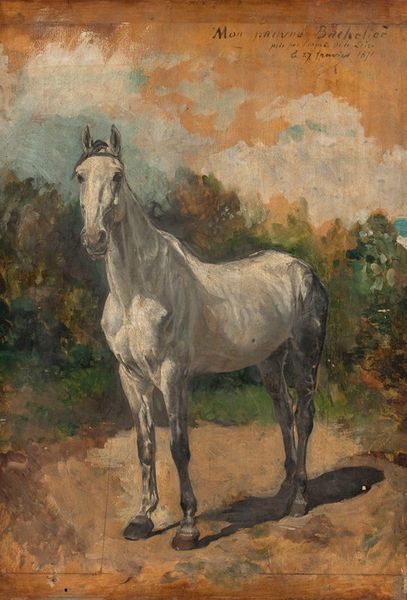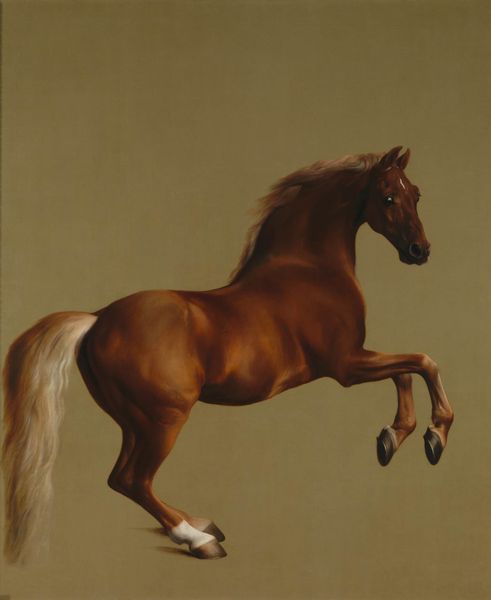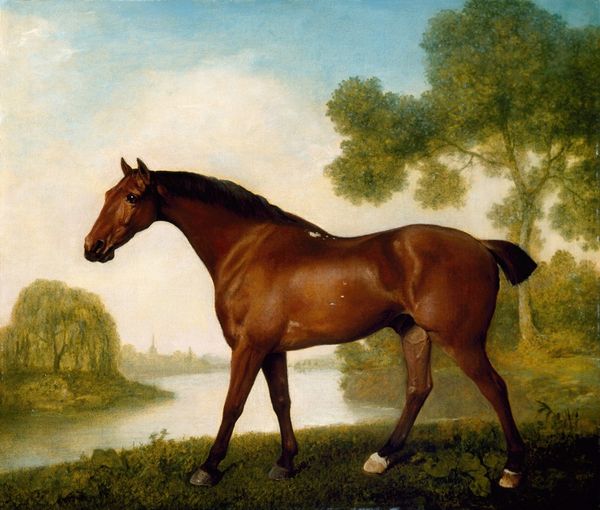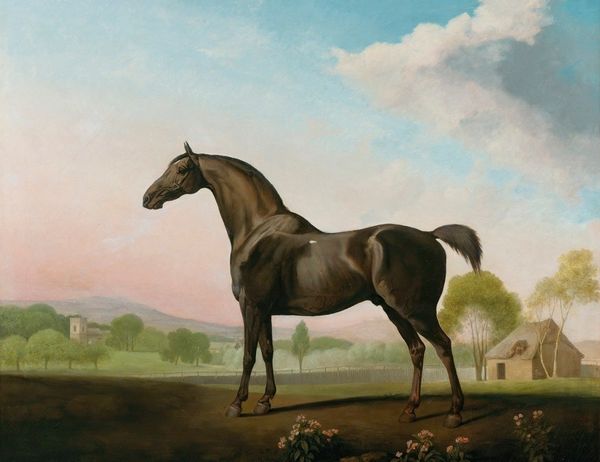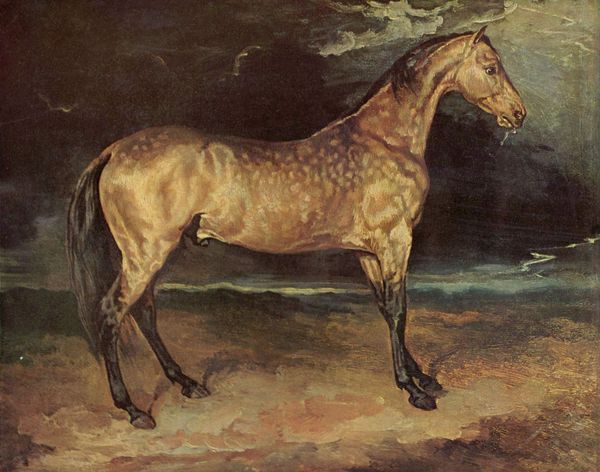
painting, oil-paint
#
animal
#
painting
#
oil-paint
#
landscape
#
figuration
#
oil painting
#
underpainting
#
romanticism
#
horse
#
genre-painting
#
history-painting
#
realism
Dimensions: 73.5 x 60 cm
Copyright: Public domain
Editor: So, this is Théodore Géricault's "Study of a Dapple Grey," painted in 1824 using oil paint. It's incredibly lifelike. I'm immediately drawn to the almost photographic detail in the horse’s musculature. How do you interpret this work within its historical context? Curator: Considering this through a historical lens, Géricault’s interest in equestrian subjects reflects the ongoing significance of horses in French society—both practically, for transport and agriculture, but also symbolically, representing power and aristocracy. Don't you think this work highlights a societal fascination? Editor: Yes, that makes a lot of sense. So, was he intentionally making a statement about these power structures? Curator: Perhaps not directly, but art never exists in a vacuum. Think about the context: the Bourbon Restoration was underway. There was a definite re-establishment of traditional hierarchies, and imagery celebrating these structures would have certainly resonated. How do you see this impacting its public reception at the time? Editor: I imagine it was reinforcing existing power dynamics, subtly reminding viewers of the established order. It's interesting to consider how the seemingly straightforward depiction of a horse can be loaded with political and social meaning. Curator: Precisely! And it's important to consider the rise of the Salon system at the time, too. Artists relied on gaining entry and positive reception in the Salon to advance their careers, shaping what kind of artwork gained visibility and popularity. This would have impacted Géricault, as he made works destined for that public forum. Editor: I see. It wasn’t just about individual artistic expression but also about navigating the complex world of art institutions and social expectations. That adds so much depth to how I see this "Study of a Dapple Grey"! Curator: Absolutely. It's a good reminder that art is not created in a vacuum, but shaped by social forces, political undercurrents, and institutional structures.
Comments
No comments
Be the first to comment and join the conversation on the ultimate creative platform.
